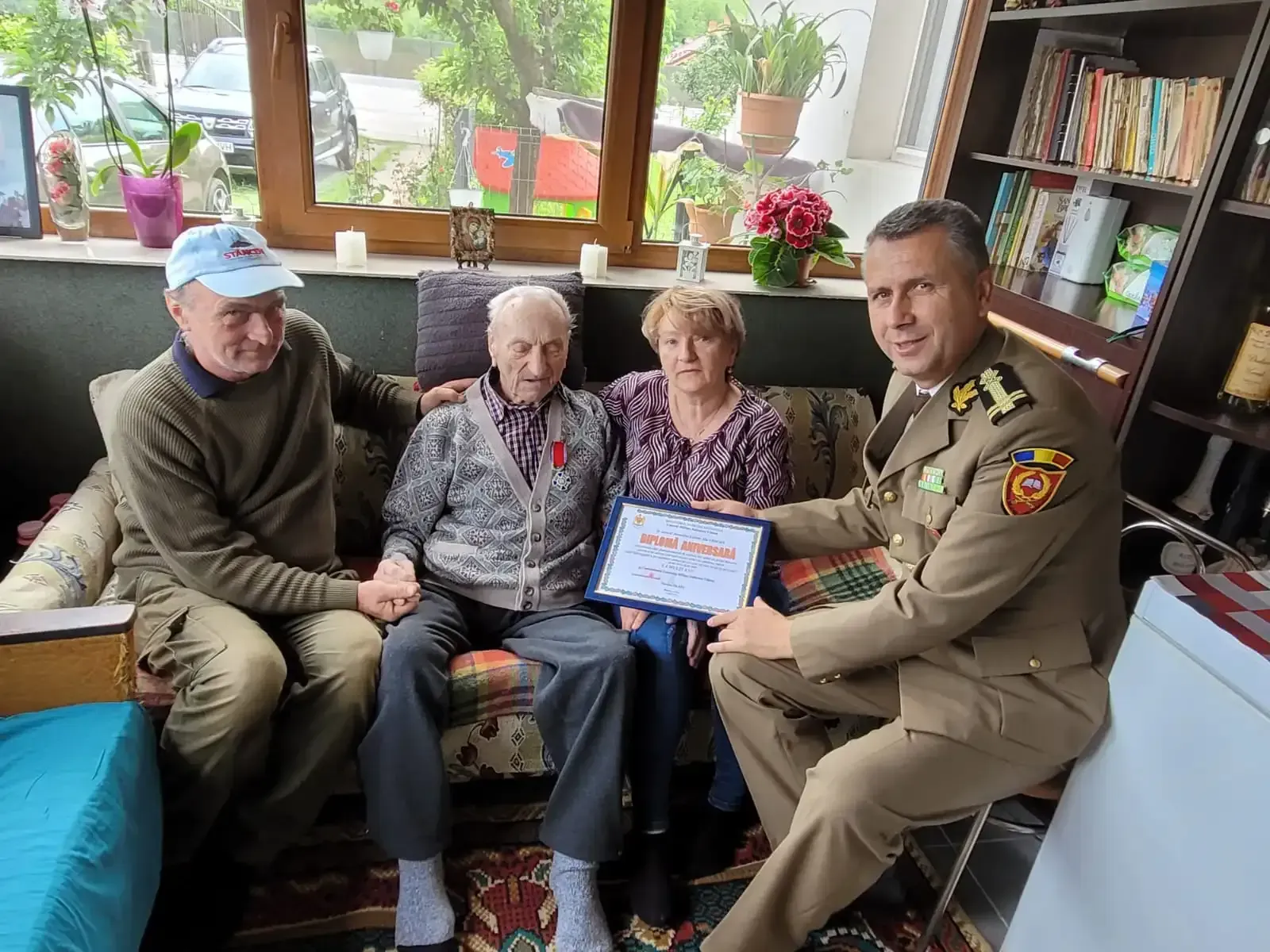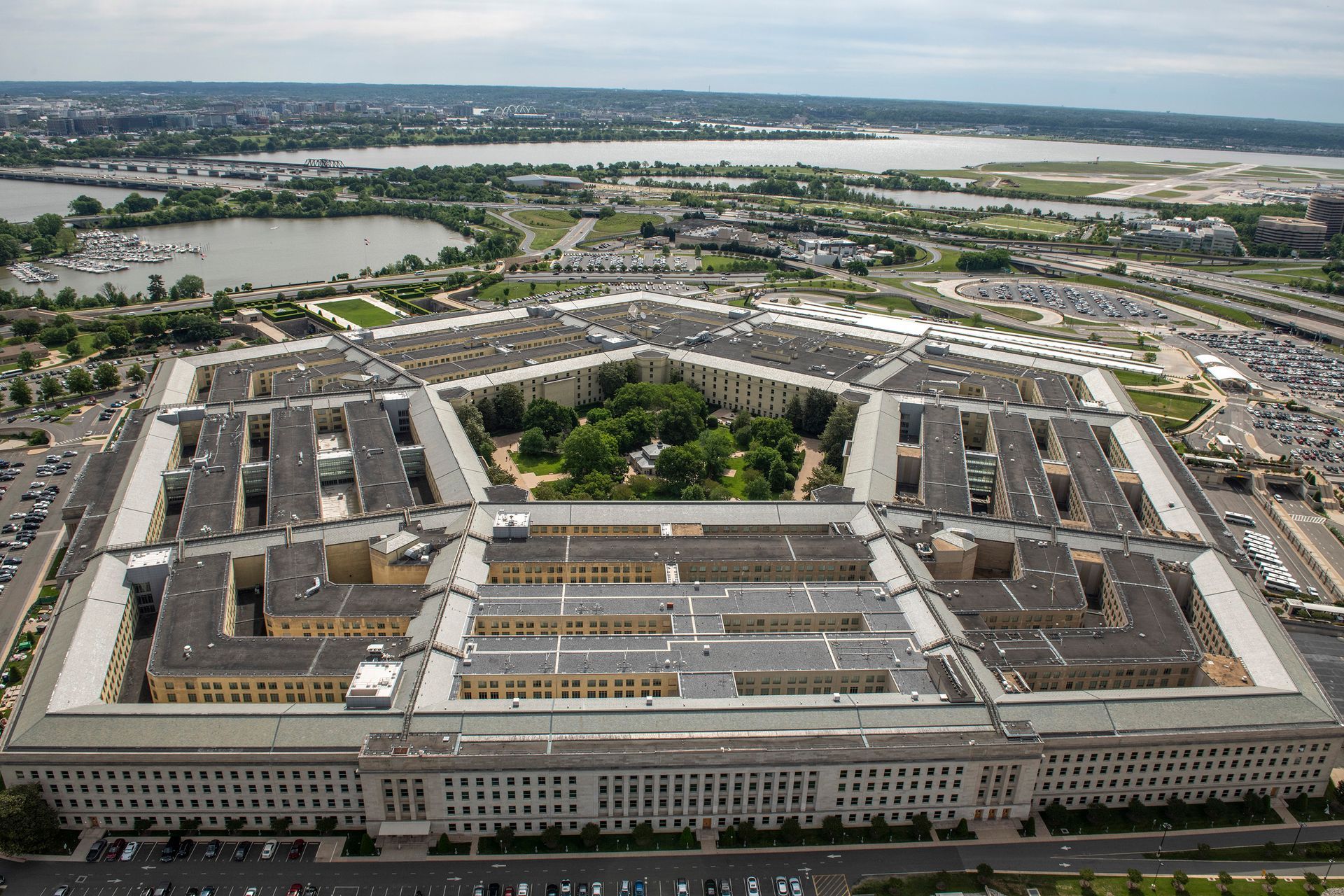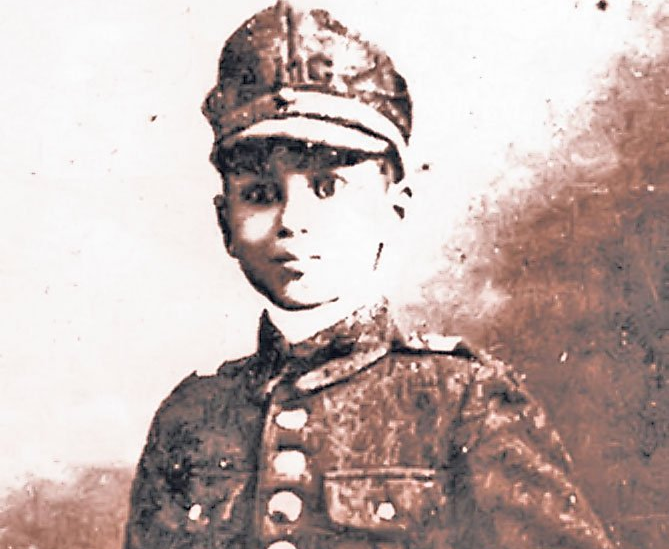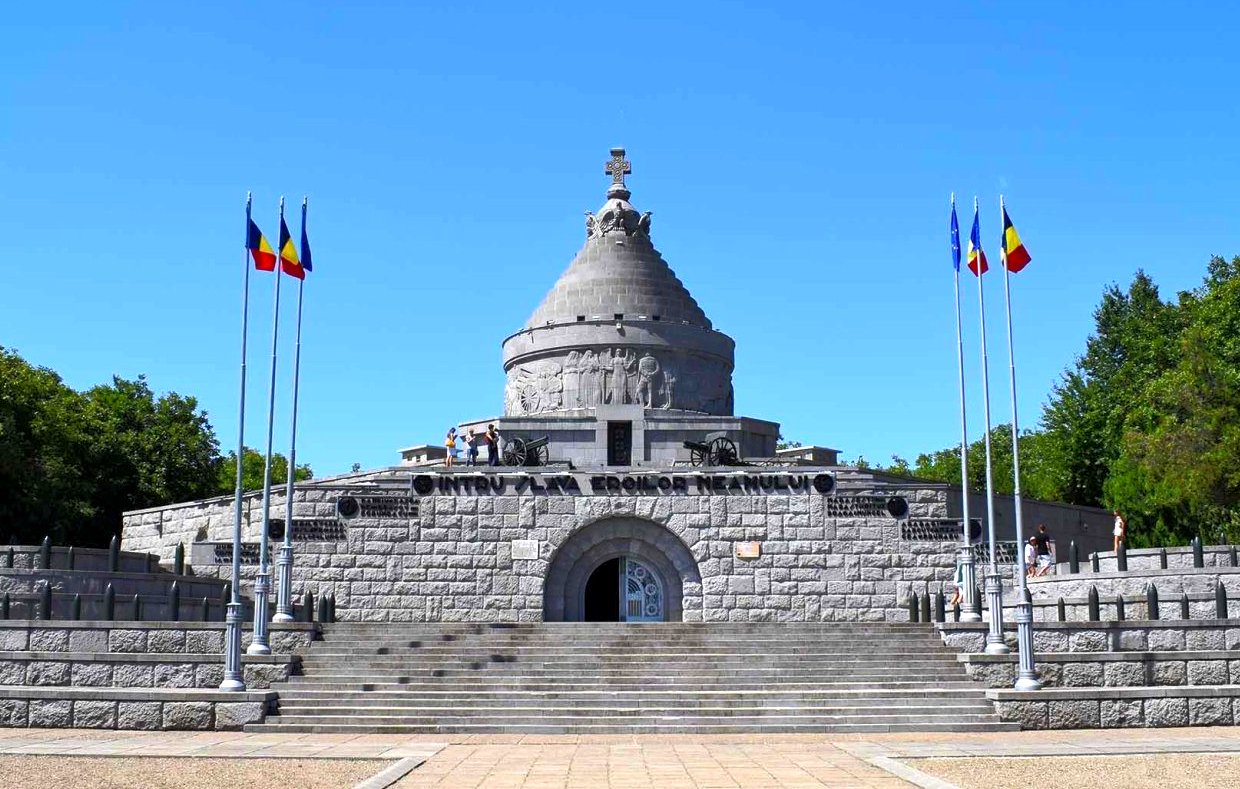World's Largest Amphibious Invasion in History, world record set by the Allied invasion of Normandy, France
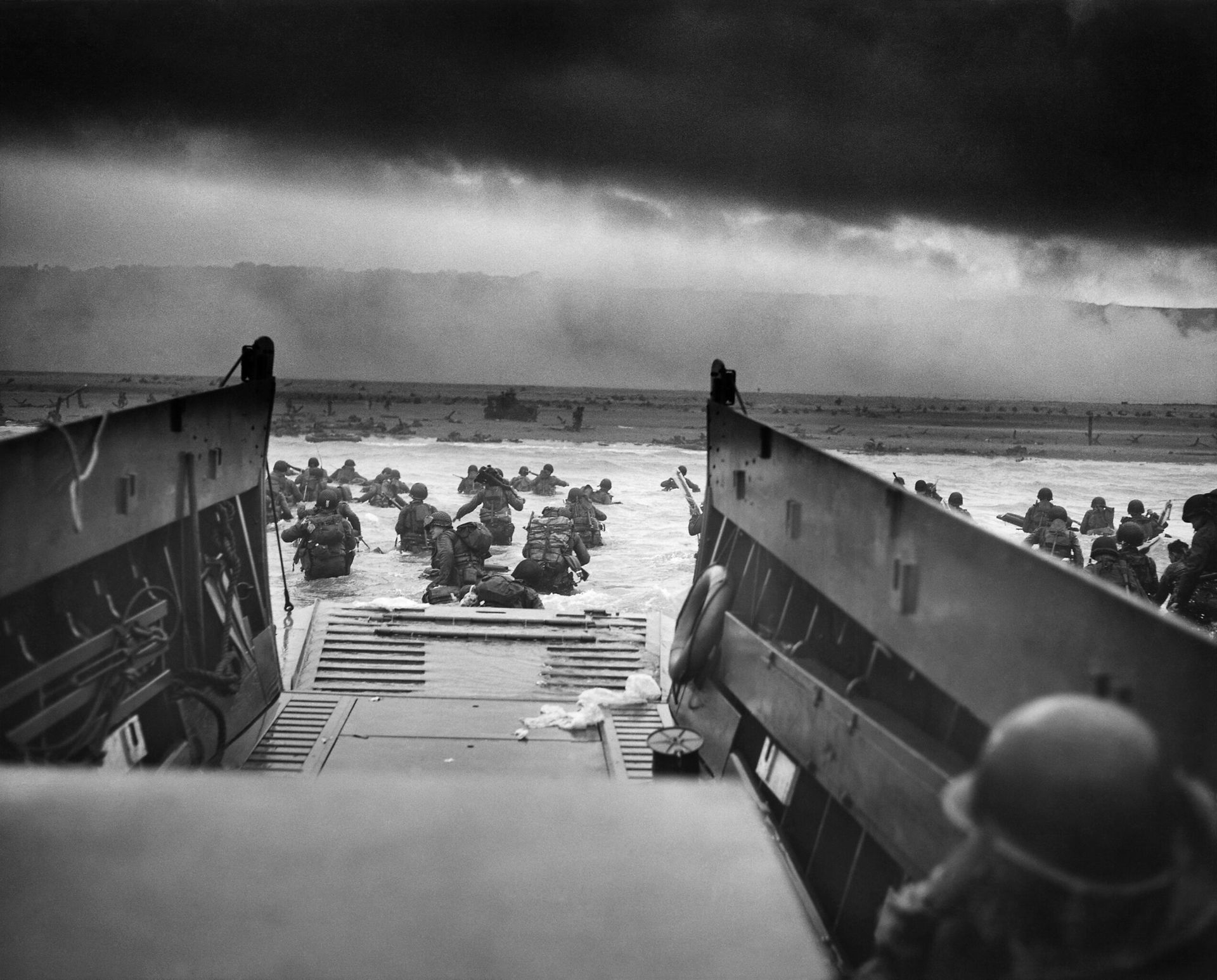
Normandy, France--The D-Day operation of June 6, 1944, brought together the land, air, and sea forces of the allied armies; the invasion force included 7,000 ships and landing craft manned by over 195,000 naval personnel from eight allied countries; almost 133,000 troops from the United States, the British Commonwealth, and their allies, landed on D-Day in what became known as the largest amphibious invasion in military history, according to the WORLD RECORD ACADEMY.
Photo: Second World War: Europe; "Into the Jaws of Death — U.S. Troops wading through water and Nazi gunfire”, circa 1944-06-06. A LCVP (Landing Craft, Vehicle, Personnel) from the U.S. Coast Guard-manned USS Samuel Chase disembarks troops of Company A, 16th Infantry, 1st Infantry Division (the Big Red One) wading onto the Fox Green section of Omaha Beach (Calvados, Basse-Normandie, France) on the morning of June 6, 1944.Photo: Chief Photographer's Mate (CPHoM) Robert F. Sargent. National Archives and Records Administration/Wikipedia

Photo: he Invasion of Normandy 1944. A Sherman tank comes ashore from a landing craft on Gold Beach, 7 June 1944. Photo: Midgley (Sgt), No 5 Army Film & Photographic Unit. This image was created and released by the Imperial War Museum/Wikipedia
"Operation Overlord was the codename for the Battle of Normandy, the Allied operation that launched the successful liberation of German-occupied Western Europe during World War II. The operation was launched on 6 June 1944 (D-Day) with the Normandy landings (Operation Neptune). A 1,200-plane airborne assault preceded an amphibious assault involving more than 5,000 vessels. Nearly 160,000 troops crossed the English Channel on 6 June, and more than two million Allied troops were in France by the end of August.
"From D-Day to 21 August, the Allies landed 2,052,299 men in northern France. The cost of the Normandy campaign was high for both sides. Between 6 June and the end of August, the American armies suffered 124,394 casualties, of whom 20,668 were killed, and 10,128 were missing. Casualties within the First Canadian and Second British Armies are placed at 83,045: 15,995 killed, 57,996 wounded, and 9,054 missing.[h] Of these, Canadian losses amounted to 18,444, with 5,021 killed in action.
"The Allied air forces, having flown 480,317 sorties in support of the invasion, lost 4,101 aircraft and 16,714 airmen (8,536 members of the USAAF, and 8,178 flying under the command of the RAF). The Free French SAS paratroopers suffered 77 killed, with 197 wounded and missing. Allied tank losses have been estimated at 4,000, with losses split evenly between the American and British/Canadian armies." (Wikipedia)
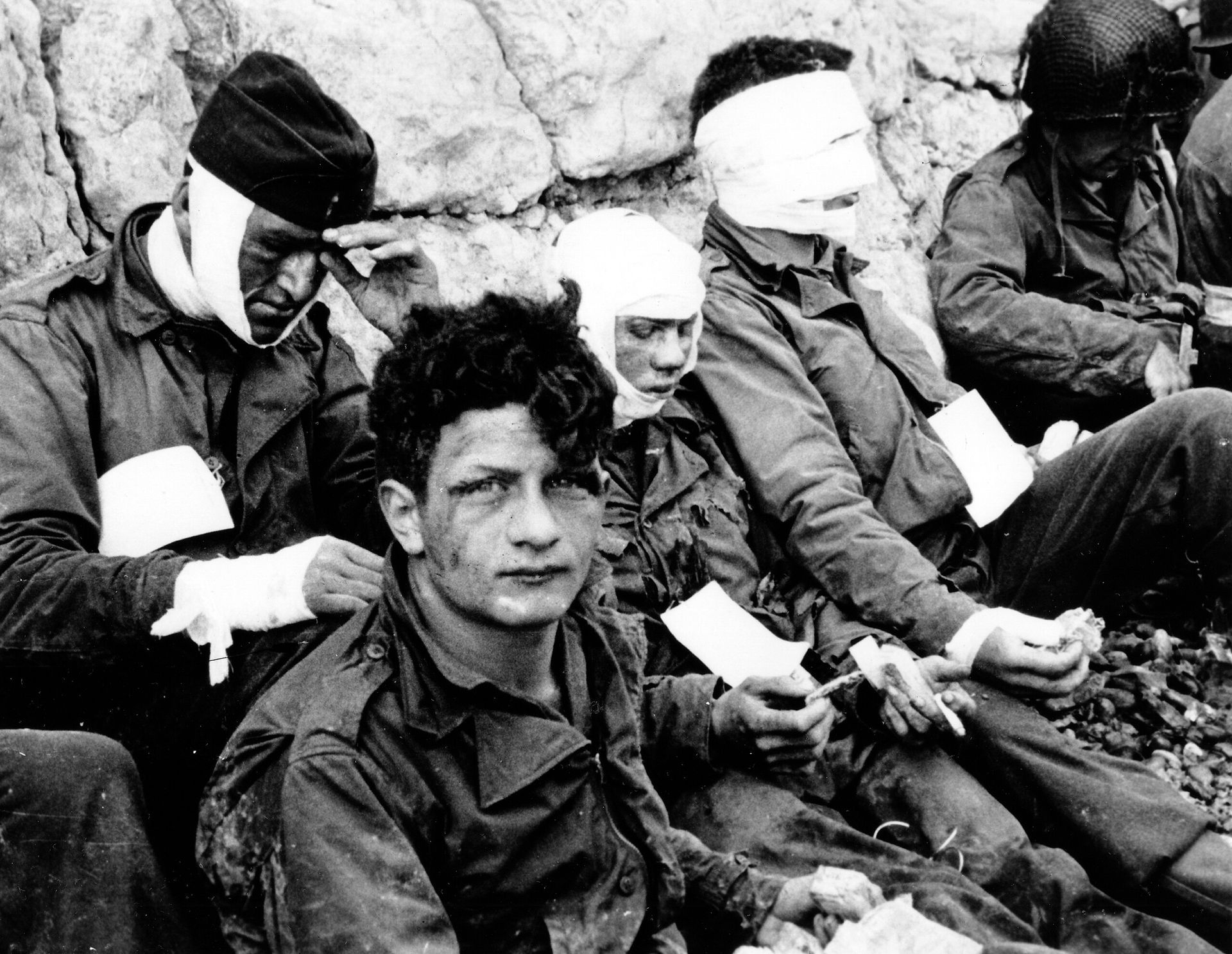
Photo: American assault troops of the 3d Battalion, 16th Infantry Regiment, 1st U.S. Infantry Division, who stormed Omaha Beach. Colleville-sur-Mer, Normandy, France, 6 June 1944. SC 189910-S American assault troops of the 3d Battalion, 16th Infantry Regiment, 1st U.S. Infantry Division, who stormed Omaha Beach, and although wounded, gained the comparative safety offered by the chalk cliff at their backs. Food and cigarettes were available to lend comfort to the men at Collville-Sur-Mer, Normandy, France. 6/6/44. Photo: Taylor, Photographer (Department of Defense. Department of the Army. Office of the Chief Signal Officer.)/Wikipedia
"D-Day is June 6 on the National Day Calendar and we are honoring those who fought on the beaches of Normandy, France. This historical day is a reminder of the day troops of Allied forces staged one of the most pivotal attacks against Germany during World War II," the National Day Calendar says.
"The Battle of Normandy was executed under the codename Operation Overlord and became known as the beginning of the end of World War II. The Battle took place was along a 50 mile stretch of beaches, including Utah and Omaha Beach. While many explanations exist for the name, many believe the word "Day" means nothing more the countdown of the Day and hour of the assault.
"The U.S., Britain, and Canada sent more than 160,000 Allied troops under the leadership of General Dwight Eisenhower. The troops manned more than 5,000 ships and 13,000 aircraft the day of the initial landing and is considered one of the largest amphibious military assaults in history."
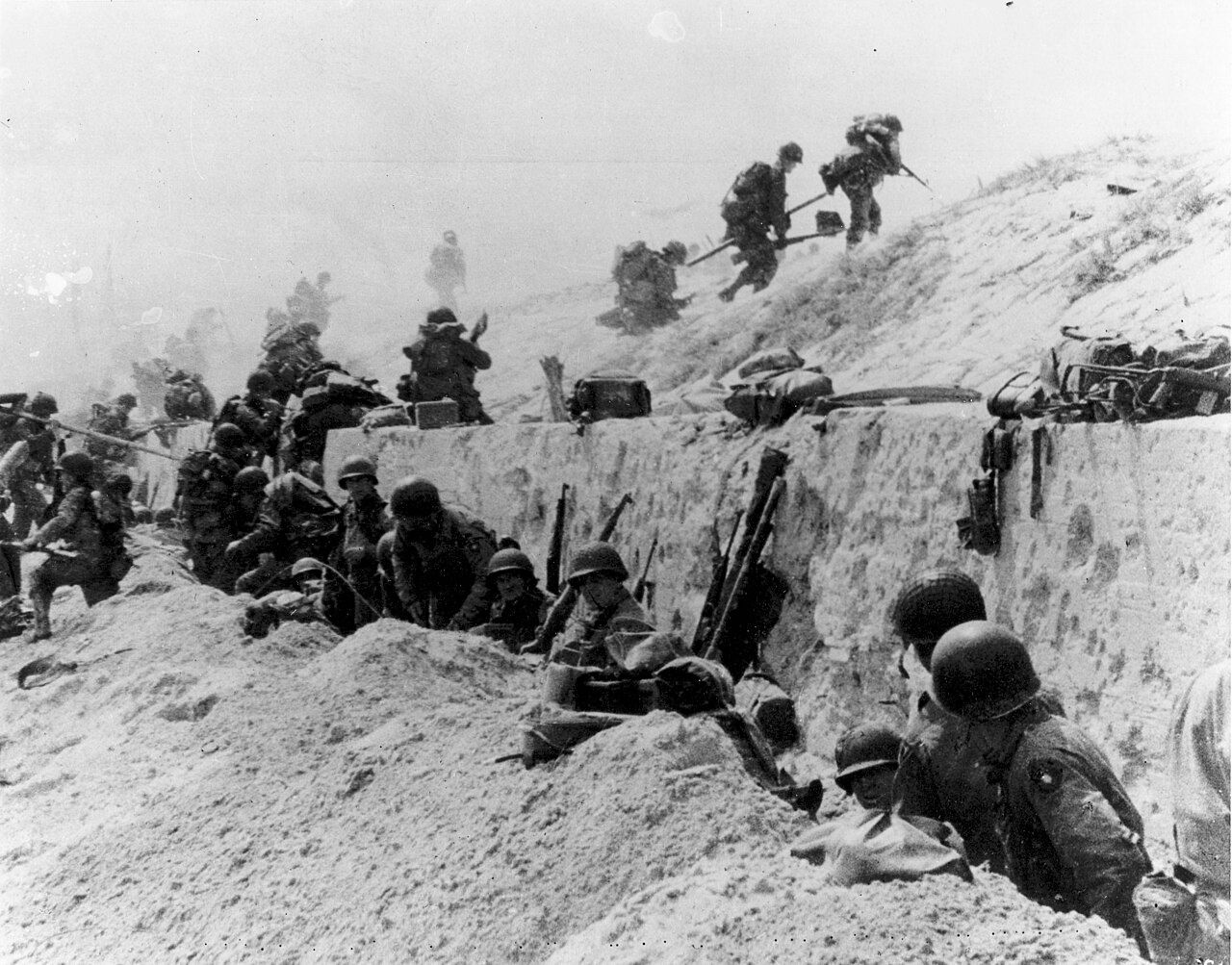
Photo: U.S. Soldiers of the 8th Infantry Regiment, 4th Infantry Division, move out over the seawall on Utah Beach after coming ashore. Other troops are resting behind the concrete wall. / e US Navy Photo #: SC 190062/Wikipedia
"On June 6, 1944, during World War II, nearly 160,000 Allied troops landed in Normandy, France, on “D-Day” as they launched Operation Overlord to liberate German-occupied Western Europe," the AP reports.
"Over 4,400 Allied troops were killed on D-Day, including 2,501 Americans."

Photo: The Allied Campaign in North-west Europe, 6 June 1944 - 7 May 1945. The Battle for Normandy: A British soldier in Caen after its liberation, gives a helping hand to an old lady amongst the scene of utter devastation. The town had been substantially destroyed during the bombardment, leaving large numbers of the population homeless./ Malindine E G (Capt), No 5 Army Film & Photographic Unit/ War Office Second World War Official Collection/Wikipedia
"U.S. Naval Forces Europe (NAVEUR) concluded its week-long commemoration of the 81st anniversary of Operation Overlord, also known as D-Day, June 6, 2025. NAVEUR’s D-Day 81 commemoration aligned with the Navy's 250th birthday year, a milestone celebrating the U.S. Navy’s enduring commitment to service and community," the
US Naval Forces Europe says.
"During this remembrance week, NAVEUR hosted various events across the Normandy region in France aimed at emphasizing the maritime contribution to D-Day and honoring the sacrifices of U.S. and Allied service members.
"Key themes highlighted throughout the week include the U.S. Navy’s contributions to D-Day, the sacrifices of all Allied service members, and the enduring and critical relationship between the United States and France, and all Allied partners."
"In the pre-dawn hours of June 6, 1944, American and Allied forces stormed a 50-mile stretch of beach in Normandy, France, winning a crucial victory that turned the tide of World War II and changed the course of history," The White House says.
"The largest amphibious invasion in history—Operation Overlord—was achieved through meticulous planning, utilizing 13,000 aircraft and gliders, 23,400 paratroopers, 5,000 ships and landing craft, and roughly 160,000 American, British, and Canadian troops. By nightfall, the valiance and intrepidity of the Allied soldiers, sailors, airmen, marines and merchant mariners had carried the day, establishing beachheads on all five of the landing beaches – Omaha, Utah, Sword, Gold, and Juno.
"This victory, though, was achieved at great cost. More than 9,000 Allied service members were killed or wounded that day, to ensure that freedom would once again prevail over the European continent."
"On the 81st anniversary of D-day, we pause to pay homage to the warfighters whose indescribable valor, fierce determination, and unwavering patriotism delivered this pivotal victory for the global cause of freedom," The White House says.
"The monumental victory forged on land, at sea, and in the skies of Normandy led to the liberation of Europe, the defeat of the evil Nazi regime, and the preservation of democracy. We are grateful for those young men who answered their nations’ calls and faced the carnage of war in order to defeat tyranny—and we are eternally indebted to the souls who gave their lives in this noble struggle.
"It is our solemn obligation to remember their heroic stories, honor their sacrifices, and ensure that the freedom for which they died for may never again be in peril."
"The D-Day operation of June 6, 1944, brought together the land, air, and sea forces of the allied armies in what became known as the largest amphibious invasion in military history. The operation, given the codename OVERLORD, delivered five naval assault divisions to the beaches of Normandy, France," The Eisenhower Presidential Library says.
"The beaches were given the code names UTAH, OMAHA, GOLD, JUNO, and SWORD. The invasion force included 7,000 ships and landing craft manned by over 195,000 naval personnel from eight allied countries. Almost 133,000 troops from the United States, the British Commonwealth, and their allies, landed on D-Day.
"Casualties from these countries during the landing numbered 10,300. By June 30, over 850,000 men, 148,000 vehicles, and 570,000 tons of supplies had landed on the Normandy shores. Fighting by the brave soldiers, sailors, and airmen of the allied forces western front, and Russian forces on the eastern front, led to the defeat of German Nazi forces. On May 7, 1945, German General Alfred Jodl signed an unconditional surrender at Reims, France."
"Originally set for June 5, the Allied invasion of France was delayed one day due to weather. On the morning of June 6, 1944, 4,000 ships carried 156,000 Allied troops to the beaches of Normandy. Some North Dakotans were already in France before Bill Ternes of Shields and Bob Feland of Almont landed on Omaha Beach," the
Prairie Public reports.
"Paratroopers had dropped into Normandy the night before. General Dwight D. Eisenhower personally met with the 502nd Parachute Regiment of the 101st Airborne Division just before takeoff. He knew many of those men would not return.
"An iconic photo captures that moment. At the center is William Hayes of Fargo, his eyes locked on Eisenhower. The general asked him if he was ready. Hayes simply replied, “Yeah.”
"Saving Private Ryan is a 1998 American epic war film directed by Steven Spielberg and written by Robert Rodat. Set in 1944 in Normandy, France, during World War II, it follows a group of soldiers, led by Captain John Miller (Tom Hanks), on a mission to locate Private James Francis Ryan (Matt Damon) and bring him home safely after his three brothers have been killed in action. The cast also includes Edward Burns, Tom Sizemore and Jeremy Davies.
"Inspired by the books of Stephen E. Ambrose and accounts of multiple soldiers in a single family, such as the Niland brothers, being killed in action, Rodat drafted the script, and Paramount Pictures hired him to finish writing it. The project came to the attention of Hanks and Spielberg, whose involvement, due to their previous successes, secured the project's development.
"Saving Private Ryan became one of the year's most successful films, earning critical acclaim for its graphic portrayal of combat. WWII veterans described the combat scenes as the most realistic portrayal of their own experiences they had seen; some said they had been unable to watch it due to their traumatic memories.
"Considered one of the greatest films ever made, Saving Private Ryan's battle-scene filming techniques impacted many subsequent war, action, and superhero films, and numerous directors have cited Saving Private Ryan as an influence on them. The picture is credited with having helped to renew interest in WWII at the turn of the century, inspiring other films, television shows, and video games set during the war. In 2014, the film was selected for preservation in the United States National Film Registry by the Library of Congress as "culturally, historically, or aesthetically significant". (Wikipedia)
